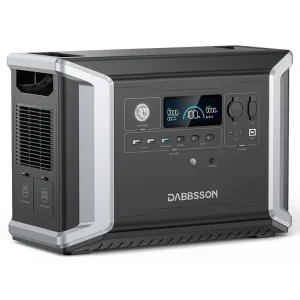Portable Power Station Security May Be Used The latest generation of portable power stations are designed with multiple safety measures which protect it from overheat, overload and short circuiting capabilities. The more competent models rely on lithium-ion ( or extremely stable LiFePO4 ) batteries for added reliability and longevity. For example, LiFePO4 batteries do not intrinsically pose a risk of overheating, even when used under heavy loads and can without significantly impacting their overall capacity lifecycle — the one that belongs to the latter is also good for more than 2000 charge cycles. It is widely used in high-capacity power stations for its greater safety margin and low possibility of thermal runaway.
Other critical areas include safety aspects of the inverter, which changes DC to AC power to use typical household appliances. A lot of known portable power station, like the Dabbsson DBS2300, come with pure sine wave inverters so it offers you clean and steady electricity output which lessens any risks of your appliances being damaged. Pure Sine Wave Inverters- Pure sine wave inverters have less harmonic distortion, which is vital for the proper working of sensitive electronics such as laptops and medical equipment to protect their internal components.
Higher end models have built-in Battery Management Systems (BMS) that handle temperature, voltage, and current on the batteries. When the system detects an abnormality, these start-up protections activate and prevent issues like over-voltage or too low of a discharge. Especially in outdoor or remote settings, a BMS increases security by shutting off the power-station as soon as it exceeds certain heat-critical levels. Battery University research has shown that BMS systems can increase lithium battery safety by up to 50%, which means these systems are integral for practical use.

As well, portable power station are made with durable casing and IP ratings to ensure they can withstand the elements. This is a spiderlike unit that can be left outdoors and doesn't care about moisture or dust: its IP65 stiffness rating protects against ingress of water and low-pressure water jets. Thermocouples also can be relied on in all sorts of weather because operating temperature ranges generally go from -10°C to 40°C.
When used in accordance with manufacturer instructions, these tools typically present minimal safety concerns. Since they generate no emissions, as opposed to fuel generators, they are secure for interior usage without air flow. They are more clean, quiet and user friendly than the gas generators with carbon monoxide emissions restrictions at 20-feet of safe distance-distance are much better suited for indoor use as well as emergency backup or outdoor events.